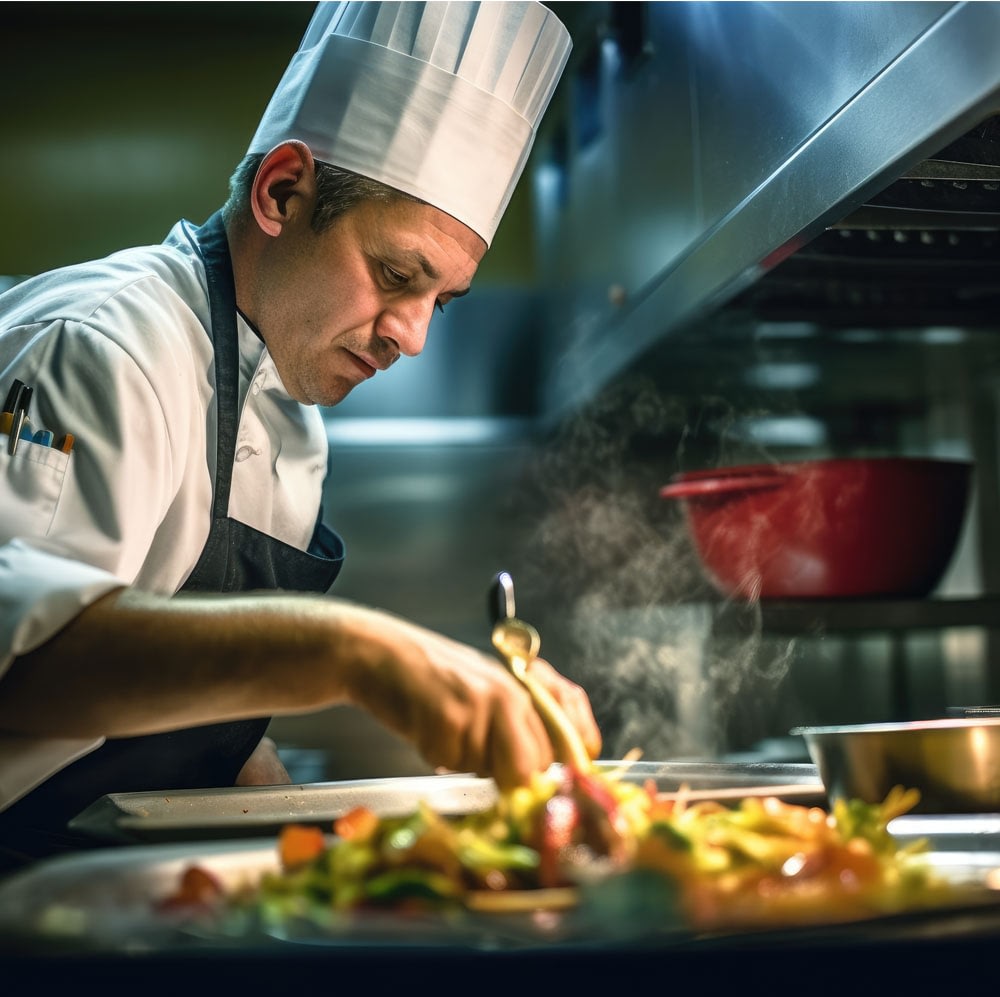The benefits of induction hob cooking far outweigh those of traditional methods. Here are seven reasons why you should seriously consider making the switch to a commercial induction hob as an energy-efficient, safe and convenient method of cooking in your commercial kitchen.
The benefits of induction hob cooking at-a-glance:
-
- Up to 70% reduction in energy consumption
-
- Safer – no flames or ignition
-
- Faster food preparation with no risk of leaving a pan ‘on’
-
- Cooler kitchens – hob only heats when pan is present
-
- Easy to clean – smooth and flat surface
-
- Space-saving sizes available

- Space-saving sizes available
View our commercial induction hobs >>
What are the advantages of an induction cooktop?
Induction cooking is more efficient than traditional methods with up to a 70% reduction in energy consumption – 90% of the energy produced channeled into the pan itself. That means that food cooks faster using less power.
Induction is safer, as there is no flame or element to ignite fumes or cause burns. When pans are removed, the hob stops heating up.
Pans and food not only get up to speed faster, but cool down quicker too, which makes life easier for chefs and cooks, especially when cooking different covers and more creative dishes.
Safety is one of the inherent advantages of induction cooking. An integrated Pan Detection System means the hob will recognise when a pan is in place, so there’s no risk of leaving the heat on (and no need for as much extraction). This reduces the risk of burns – both for food and staff.
Induction cooking creates a cooler environment in the kitchen, as the surface only heats up when a pot or pan is applied, instead of having to keep your cooking appliances heated and ready throughout busy service periods. Energy is contained in the pan, which means that the heat doesn’t escape into the surrounding air.
Best of all, induction hobs have an entirely smooth surface, making them easy to clean and maintain. There are no hidden nooks or crannies where food or grease particles can get stuck, and spills won’t bake on to the surface.
Mobile caterers – think food trucks and stalls – can rely on space-saving commercial induction hobs to help them keep food hot, fresh and ready to serve.
Long-term induction hob advantages
Far from being a ‘flash in the pan’, induction cooking is in fact a smart, long-term approach to overcoming several day-to-day issues that commercial kitchens face. From single-plate models to large ranges, induction hobs make it easier to create delicious meals in smaller spaces, and with fewer resources.
Is Induction cooking better than gas?
Induction cooking is better than gas, because chefs and cooks can have the same control of temperatures, while benefiting from an appliance that’s easier to clean afterwards. Induction hobs are also more efficient, with less wasted ambient heat – and the added benefit of keeping your busy commercial kitchen cool as a result.
Is Induction cooking better than electric?
Induction hob cooking is far more beneficial to your kitchen and staff than electric for all of the reasons above – plus induction heats up far more quickly than electric. With electric there is less ‘controllability’ as it takes a while to cool down and adjust temperatures during cooking.
Is induction cooking energy efficient?
Induction hobs take less time to get ‘up to heat’ which saves on energy usage – and with 90% of the energy produced channeled into the pan itself, induction hobs are hugely energy efficient during cooking too – which is great news for budget-stretched businesses as well as facilities management partners bidding on commercial contracts.
With so many benefits, it’s easy to see why induction hob cooking should have its place alongside, and even instead of traditional gas and electric methods. It promotes efficiency, is easy to use and offers consistent results – all things that a commercial kitchen needs in order to be successful. Get in touch below to start a conversation about switching to induction.

